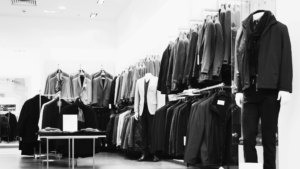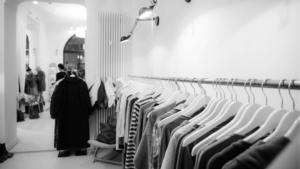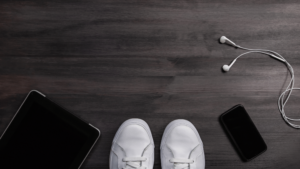
We’ve seen and heard about Silicon Valley’s casual hoodies, the jeans, the snowboards, and seen the ripple effect as first tech companies, then all start-ups, and now nearly every company brags about a “casual dress code”. If you’ve never worked in one before, it sounds heavenly. Just throw on what you wore this weekend, right? Isn’t that what Mark Zuckerberg does? That’s because you haven’t seen the trap lying in wait.
This is about dressing with sprezzatura. For those who didn’t study Italian, that’s a “certain nonchalance, so as to conceal all art and make whatever one does or say appear to be without effort and almost without any thought about it.” Does it still sound easy now? Here’s your cheat sheet for the “casual” uniform.
What Men are Wearing
What Women in Tech are Wearing
General Guidelines
All About Function
What Men are Wearing
Worn initially by the likes of Mark Zuckerberg (Facebook) and Evan Williams (Twitter, Medium), the bro uniform of hoodies and jeans, usually paired with running shoes, is the most common look associated with the tech industry. In Uncanny Valley, Anna Wiener’s 2020 memoir of 2010s San Francisco startup life, she described the fashion succinctly, “Bars were overrun with men in their twenties wearing corporate-branded T-shirts…Men who wore stability running shoes to nightclubs.”
That look appears to be out of style, with the largest names in the business turning towards a more polished appearance. Jeff Bezos may have stepped the game up in general when he hired a stylist. His clothes are now excellently tailored and he has an affinity for bomber jackets. Elon Musk wore a designer suit when he hosted Saturday Night Live but is generally seen in khakis. What all moguls can agree on is that the clothes must fit well, be of good quality, and that the shoes make the man.
Above all else, make sure your outfit fits the social situation and fits your body type. You wouldn’t wear the same outfit for working from home as you would taking out a client. The same goes for wearing clothing that doesn’t fit or flatter you. While comfort is king, you still want to convey the right message. Not participating in the conversation isn’t an option, so you might as well send the right one.
What Women in Tech Are Wearing
In the tech industry, the emphasis is usually on what you deliver as a person. This can make fashion for work a minefield for women. This mindset changes what people consider a professional outfit. Since women only make up 25% of the tech industry, some are using it to their advantage. After all, if you’re going to stand out anyway, why not lean into it? Exaggerated proportions, unapologetically large earrings, and sleek pantsuits in any color are a way of refusing to blend into the background. This is in direct opposition to the industry stereotype that if you look like you care, you’re focusing on the wrong things.
There have now evolved to be two stereotypes of women in fashion, which historically show women either blending in with the other software designers or standing out. Satirized by the HBO show “Silicon Valley”, it was either women in cotton sweatpants, dark slim pants, and washable Rothy’s flats or the opposite extreme of women in bright designer outfits or sleek power dresses. After all, Whitney Wolfe Herd, the founder of Bumble, became the world’s youngest self-made female billionaire when she took the company public in February and she was wearing a pineapple-colored suit on loan from Stella McCartney and yellow Manolo Blahniks.
While plenty of women shy away from dressing fashionably while working in the tech industry, there is a subsection of those who believe that you should look as pulled together as you are. Just because you can put an outfit together doesn’t mean you’re not a thought leader. Standing out takes courage, but it’s far better to directly imitate them. Elizabeth Holmes, the founder of Theranos, was openly mocked for her love of black turtlenecks, a kind of Steve Jobs cosplay, long before the company collapsed.
Many women, as evidenced in this Medium article, have expressed that they fall into a uniform of some kind that works for them. Answers range from occasionally wearing heels to jeans, sneakers, and a camisole with a long-sleeved shirt over it. Jeans and stylish top appears to be the rule of the day, depending on where you work. The safest choice is dark-wash jeans, low-profile shoes, and a plain shirt in muted colors. If you feel it needs a bit more, Corporette suggests adding a third piece to make your outfit polished without being fussy. Adding one more piece such as a necklace, a cardigan, etc. will take your outfit to the next level without coming across as stuffy.
General Guidelines
Where you work is a factor in what “casual” means. If you’re going to a really big software company, think casual but conservative. Jeans are usually okay, with a collared or button-down shirt. If it’s a small start-up, they’re usually just glad you came and clothing isn’t as important.
Large hardware companies tend to be more conservative in culture and nature, so it makes sense that they’re a level up from the software version of casual. That means no jeans or leggings, and you’ll definitely want a button-down shirt or office sweater.
Shoes
No flip-flops. No matter how casual any environment is, absolutely no one wants to hear you walking around all day. This is just basic consideration for everyone else.
Men: Choose more formal sneakers or simple tie shoes. Some go with suede, but you see how anyone near water, rain, or temperamental weather would think twice. Leather will work. The more flexible your company’s dress code, the more you can show off your financial success with your bad-boy shoes. Sneakers can be truly wild colors and combos, but keep them clean.
Women: flats (open-toed for warmer weather, flat boots for cooler weather, leather or imitation in bold colors), more formal sneakers. Wedges or heels for those who prefer some height. Choose colors you enjoy, as it’s the silhouette that ultimately matters.
Outerwear
Obviously, your outerwear is based on both your climate and your culture. The men of Seattle and Silicon Valley are both known for their obsession with Patagonia fleece vests. Check out this interesting article from Business Insider’s Why Silicon Valley Loves Fleece Vests for how this happened.
All New Yorkers love a slim-lined black coat, that’s tailored with ease of casual wear, like a classic overcoat or trench coat. Black coats show a traditional piece without losing the overall effect of being sophisticated and chic while still “casually thrown on”. Camel coats are an excellent alternative if you can’t handle any more black.
Whatever you choose, make sure it fits where you are and the aesthetic you’re going for. When in doubt, choose a classic style over anything trendy.
Accessories
Perfume, Cologne: No. Some people are allergic to those, so wear either with great restraint or not at all. Consider how close people are going to get to you before applying.
Bags:
Men: Messenger bag.
Women: Crossbody purse or messenger bag.
Both are efficient and free your hands for any last-minute texting or phone calls.
Jewelry:
Men: not much, if any.
Women: The style can be either bold or minimal.
Wristwear: Timex, Pebble, Fitbit, or Apple watches are all acceptable. Knockoffs will be noticed. Better to go without than with a knockoff.
Glasses: Warby Parker. Excellent imitations acceptable.
All About Function

The known Silicon Valley fashion of Patagonia vests and sneakers came out of function over formality. What you wear should work for your situation: the work environment, the weather, your budget, and your comfort. As long as you look presentable and on top of your hygiene (even on remote video calls), you’ll present yourself well. In the end, ideally, your work will speak for itself, not your clothes.
More tips are available here:
Dress For Success in Interview


